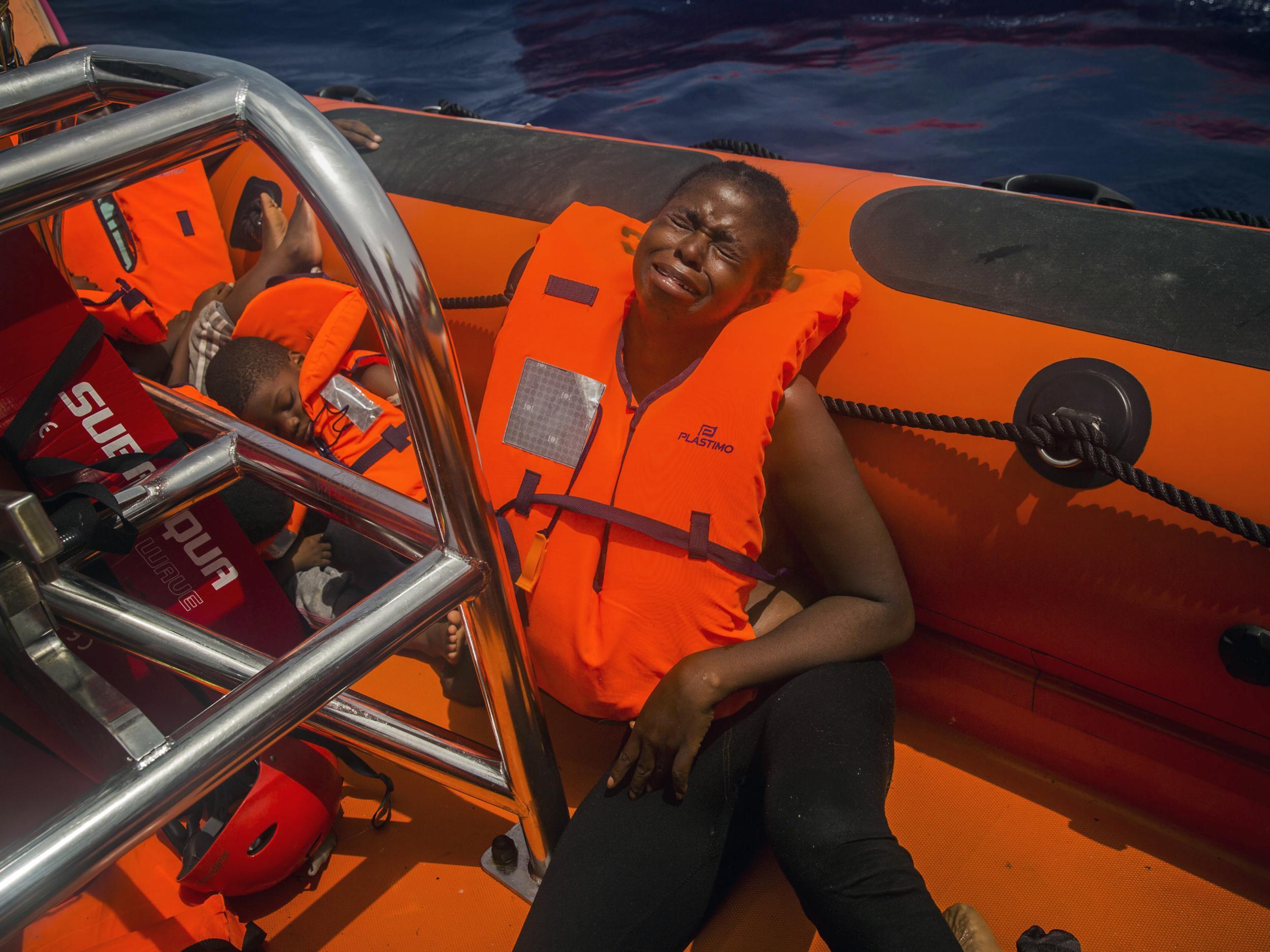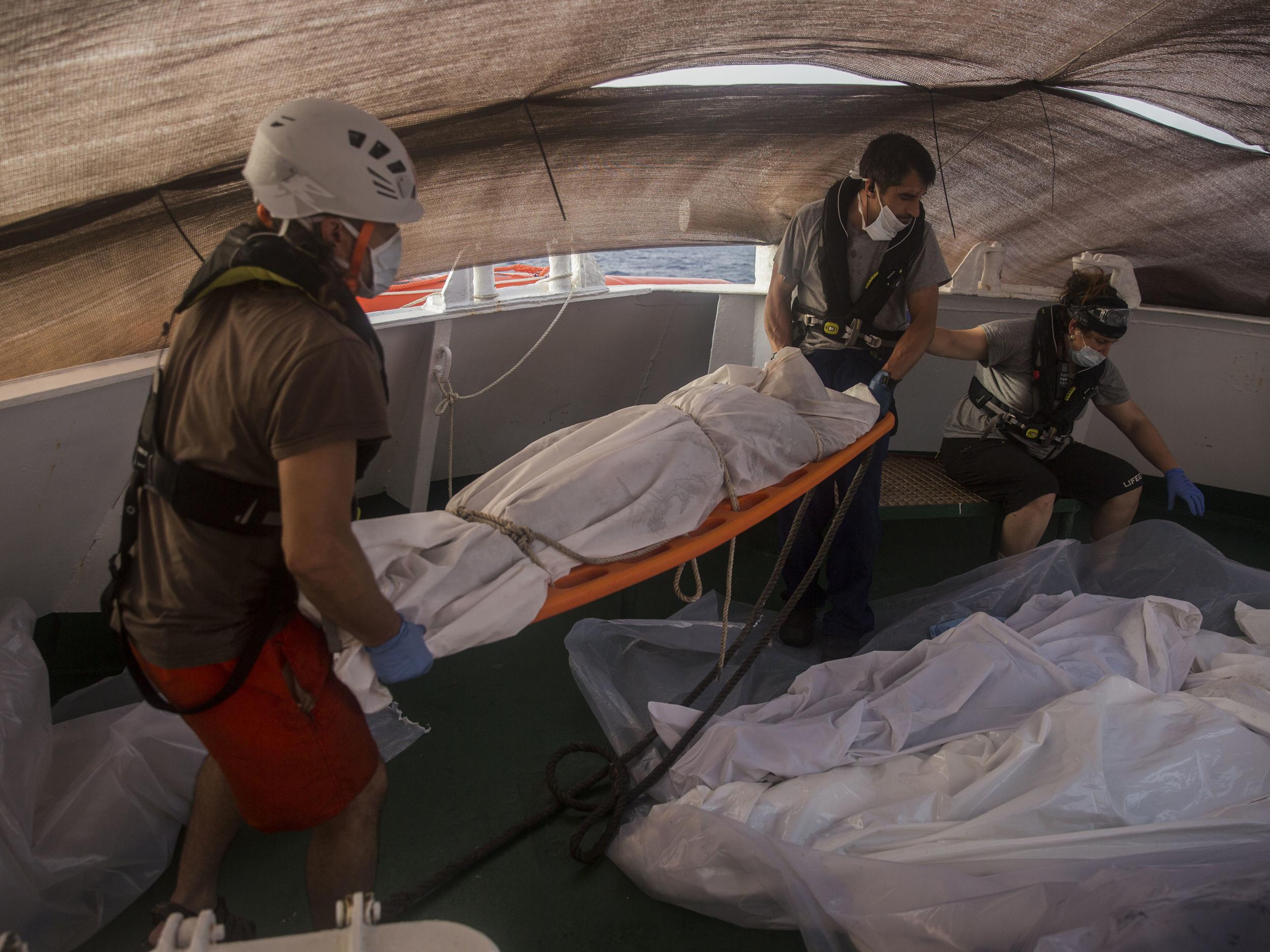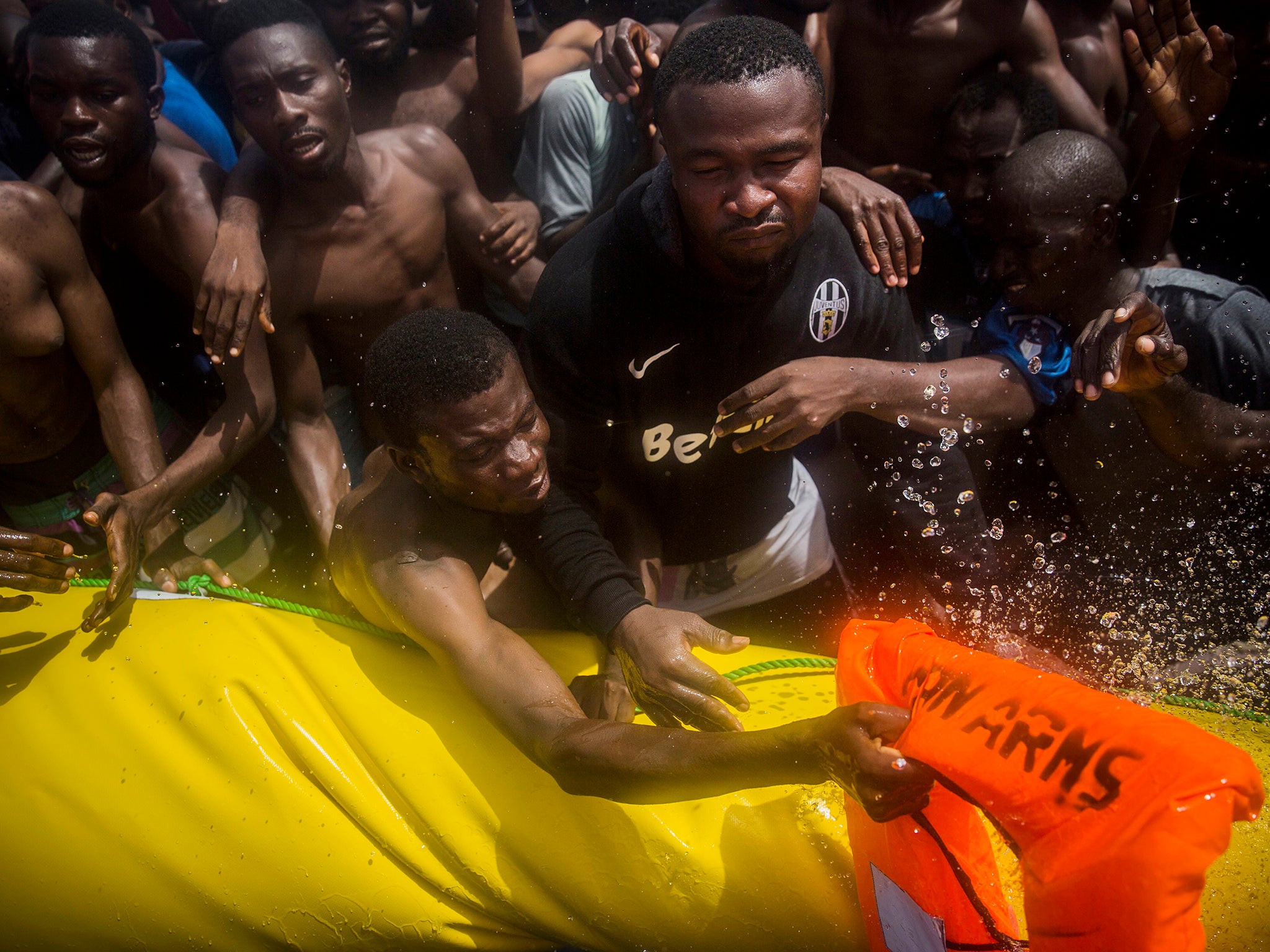Images show reality of refugee crisis as 13 people found dead in overcrowded dinghy off Libyan coast
'They didn’t die by drowning outside the boat, but drowning inside,' says rescue mission leader
Warning: potentially distressing imagery

Your support helps us to tell the story
From reproductive rights to climate change to Big Tech, The Independent is on the ground when the story is developing. Whether it's investigating the financials of Elon Musk's pro-Trump PAC or producing our latest documentary, 'The A Word', which shines a light on the American women fighting for reproductive rights, we know how important it is to parse out the facts from the messaging.
At such a critical moment in US history, we need reporters on the ground. Your donation allows us to keep sending journalists to speak to both sides of the story.
The Independent is trusted by Americans across the entire political spectrum. And unlike many other quality news outlets, we choose not to lock Americans out of our reporting and analysis with paywalls. We believe quality journalism should be available to everyone, paid for by those who can afford it.
Your support makes all the difference.More than a dozen dead bodies have been recovered from a rubber dinghy crammed with 181 people off the coast of Libya.
Among the 13 dead, thought to be sub-Saharan African refugees fleeing Libya's bloody civil war, were two pregnant woman, a charity has said.
The overcrowded boat was found drifting on 24 July near the people-smuggling hub of Sabratha, western Libya.
Images from the boat show corpses lying on the deck, which The Independent has chosen not to publish. They demonstrate the grim reality for migrants on the Mediterranean Sea.
A freelance photographer working for Associated Press who was following Spanish rescue group Proactiva Open Arms, told Time he heard children crying and calling out for their mothers as he boarded the boat.
Ricardo Gatti, who led Proactiva's mission, told the magazine that five of the dead were men and eight were women, two of whom were pregnant.
Bruises on some of the women on the boat indicated they may have been been sexually assaulted, he said.

Proactiva's medical team said it believed the refugees could have died after slumping to the floor because of seasickness. They may have suffocated after inhaling toxic fumes created when fuel from the boat mixed with salt water.
“They didn’t die by drowning outside the boat,” Mr Gatti said, “but drowning inside the boat”.
At least 2,365 refugees are thought to have died crossing the Mediterranean this year, according to UN data.

Since the Aegean route through Turkey was almost completely closed, with stricter Balkans border controls and the EU-Turkey deal, an increased number of refugees are risking the more dangerous route to Europe from Libya to Italy.
A Unicef report released on Tuesday found that many children trying to cross into Europe from Africa did not intend to go to Europe when they first left home.
Systematic trauma and abuse they suffered in Libya motivated the vast majority of them to leave home alone, they were not motivated to make the hazardous crossing by pull factors, the report concluded.
In April, 18 migrants including four children were found dead in a boat drifting near Sabratha. The interior ministry's security commander said the victims appeared to have died of thirst and hunger.
People smugglers have increasingly packed people into dinghies not fit to make the crossing, with many of the boats sinking.
Yet a trend of refugees being found dead inside boats has emerged, with many migrants being killed when they are crushed or suffocated inside crowded rafts.
Subscribe to Independent Premium to bookmark this article
Want to bookmark your favourite articles and stories to read or reference later? Start your Independent Premium subscription today.
Join our commenting forum
Join thought-provoking conversations, follow other Independent readers and see their replies
Comments